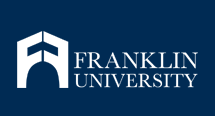The Efficiency of Nonprofit Mergers
Date of Award
Fall 2020
Document Type
Dissertation
Degree Name
Doctor of Business Administration (DBA)
Committee Chair
Andy Igonor
Committee Member
JoAnna Williamson
Committee Member
David Meckstroth
Abstract
United Way is a nonprofit organization that works to advance the common good by catalyzing everyday citizens to make a difference in their community by giving, advocating, and volunteering. The organization, born in the 1800s, the organization seeks to enhance its relevance. After being ranked as the largest US fundraising organization based on gross revenue 24 of the prior 25 years, the United Way network was surpassed by Fidelity in the 2015 Chronicle's Philanthropy 400 ranking, causing the organization to examine its efforts to transform its value proposition and increase its relevance.
This dissertation focuses on the possibility of United Way affiliate mergers to drive organizational efficiency, one possible strategy to increase organizational relevance. The research is focused on the 2015 merger between United Way of Allegheny County and United Way of Westmoreland County in Pennsylvania. It employs an exploratory case study approach using a document analysis and semi-structured interviews as data collection processes. Interviews were conducted with 11 participants via Zoom to gather open-ended feedback on their thoughts about the merger. The participant pool was comprised of board members, executive staff, and cross-functional staff team members. The pre-merger United Ways of the participants were both United Way of Westmoreland County and United Way of Allegheny County. The data was triangulated by conducting a document analysis reviewing IRS Form 990 for both organizations before the merger, and of the new organizations post-merger, allowing the researcher to gain a comprehensive view of the efficiency of the 2015 merger.
The participants had remarkably similar feedback across functional groups and pre-merger United Ways. All feel that the merger was a success. Efficiencies cited were access to increased staff talent, increased upward mobility for staff, strengthening the organization’s community voice, and garnering a more prominent seat at the community table. The financial analysis also showed greater efficiency through reduced expense ratios, increased net assets, and new donor groups. It was determined that it has taken longer for financial efficiencies to materialize, but they are being realized and expected to grow in future years.
Recommended Citation
Harris, Angel, "The Efficiency of Nonprofit Mergers" (2020). All Doctoral Student Dissertations. 17.
https://fuse.franklin.edu/docpub/17


